It protects electrical devices from excessive or fault currents. GFCIs are also known as Ground Fault Circuit Interrupters. GFCIs are slightly different from regular circuit breakers.
It will be easier for you to understand why GFCI outlets and receptacles are required by code to protect you and your family from accidental electrical shock risks.
A GFCI is an essential part of every home, so if you don’t have one, you’re missing out. To keep your friends and family safe from ground faults, you must use GFCI technology. Additionally, outdoor outlets can be fitted with GFCIs.
Almost everywhere where the appliances and their outlets are exposed to moisture, GFCIs need to be installed. The NEC emphasizes the importance of consumers using GFCIs to protect their homes. Keeping the law in mind is imperative.
GFCI outlets can be connected to light switches without any problems. The proper installation will prevent unnecessary leakage and fault currents from damaging your light.
GFCIs and how to connect them to a light switch are discussed in this article. GFCIs have several benefits over other circuit breakers, which I will also discuss. Here are some amazing things you can learn from me.
Is It Safe To Add A GFCI Outlet To Light Switch?
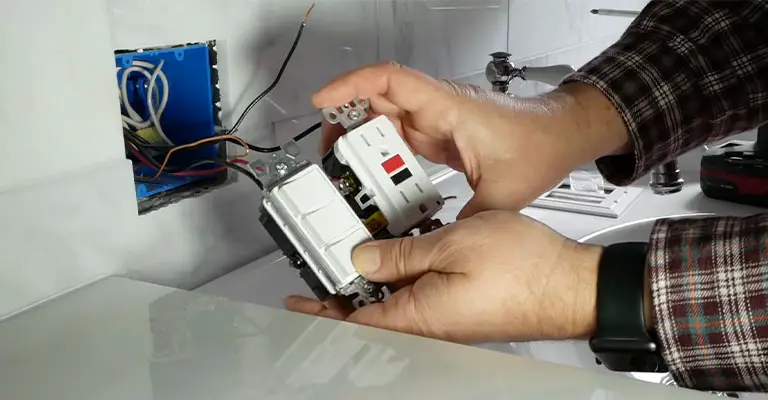
There is no risk involved. You’re most concerned about a tripped GFCI turning off the lights, which isn’t an issue during the day. A GFCI that keeps tripping without apparent reason may become an annoyance at night.
A professional electrician does not lose anything by adding this technology to your lights. In addition to protecting you, it also adds a layer of convenience.
Can You Put A Switch On The Load Side Of GFCI?
That’s for sure. What’s the problem? The NEC code does not prohibit GFCI receptacles from installing switches on their circuits. It is specially intended to interrupt power to that receptacle.
In the case of installing a switch to operate a light that is powered by that receptacle. It’s okay with me. Receptacles require a hot (supply) wire and a line (hot) wire. Eventually, you will have to install a neutral in your switch box under the new codes.
Thus, all three wires (hot, neutral, and ground) must be connected to the switch box. GFCI receptacles that operate during power outages may be a good choice for you.
Some will reset when the power is turned off. However, the majority of them will work fine. Your chances of having a problem are slim if you use the right GFCI and correctly install the switch.
Why Do You Need To Wire A GFCI To Switch?
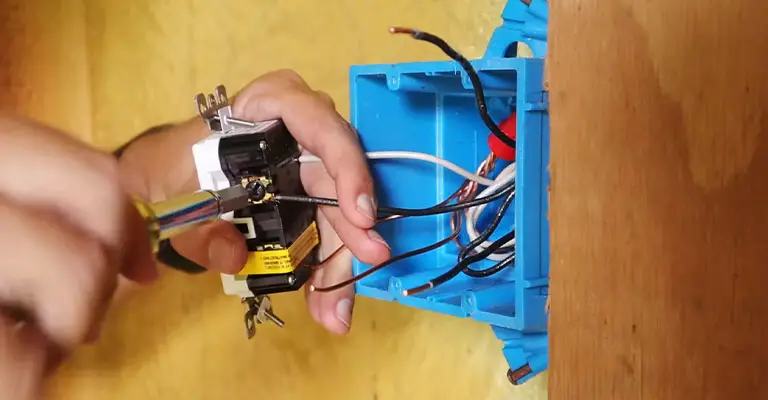
Light switches don’t require GFCI wiring. However, there is a greater risk of getting water on outdoor lighting fixtures due to their location. So make sure the outlet you connect them to is GFCI protected if you must connect them to an outlet.
If you do not use GFCI technology for outdoor light fixtures, I will not ask you to use it for external outlets. Instead, you should purchase lights rated for wet environments.
Besides keeping you safe, your electrician will also care for everything else. A good example is running circuit cables through the dry parts of the walls that are not exposed to moisture.
There will also be some wires running underground, but only if they can withstand wet conditions. Finally, the lights in the bathroom need to be taken care of.
It is unnecessary to install GFCIs on the lights in the bathroom, but you do have to install them on the outlets.
Even so, moisture can enter a bathroom through the lights. A malfunction can pose fire and electrocution hazards to the homeowner. GFCI protection isn’t necessary for lights in bathrooms if they are water-resistant.
Therefore, you do not have to purchase GFCI technology to protect your family and friends from electrocution.
Things To Consider When Installing A Switch On A GFCI Receptacle
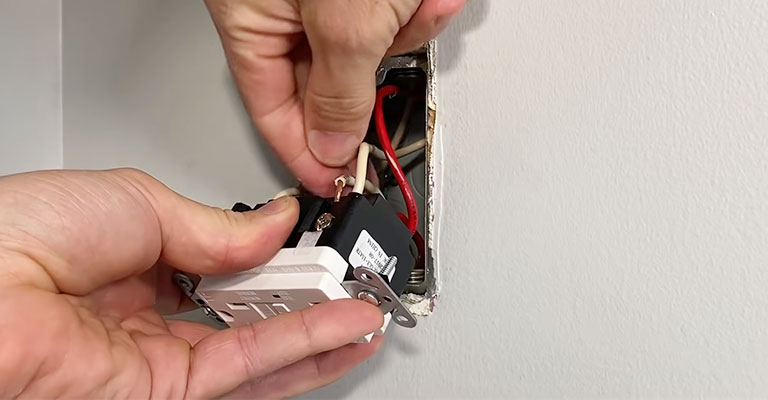
GFCI receptacles are sometimes sensitive to load changes, so you should keep this in mind when installing a switch. Turning off and then turning back on a load can sometimes cause them to trip.
GFCIs should be avoided when operating a device or appliance with a high current.
If you want to use a regular outlet and a switch, you should install a GFCI breaker on the circuit. The GFCI will probably stop tripping under normal circumstances if this is done.
Note:
To ensure this work doesn’t require a license or permit, check with your local building department first.
Additionally, the electrical inspector can confirm or deny if the building department and/or code allow switching GFCIs.
There are some rules they have that aren’t in the NEC. Most of the time, but not always, they require you to follow the instructions from the manufacturer. So if the manufacturer doesn’t allow you to install a switch, you probably won’t be able to.
Can A GFCI Outlet Be Connected To A Light Switch?
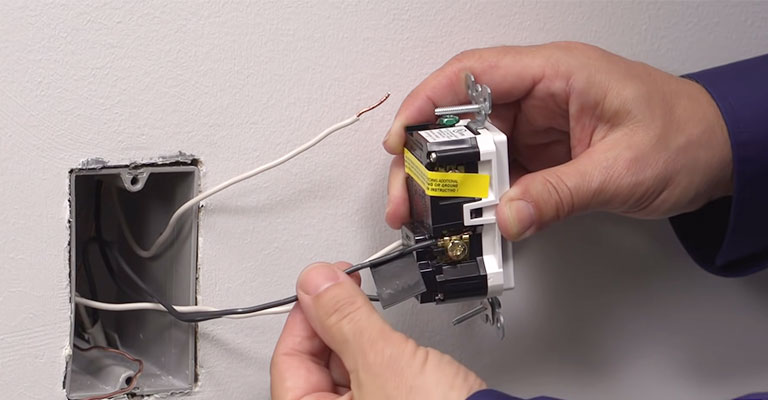
If a contractor chooses the right light fixtures, he’ll consider the location. It’s important to buy lights rated for wet locations since they will be outside.
Adding GFCIs to the light switches in such conditions is a good idea. Of course, GFCIs aren’t required, but if you want an extra layer of protection, you don’t have to worry.
There’s a load side and a line side to GFCIs. The load side is where you can connect switches and outlets that you want to protect. On the load side, every device is protected by the GFCI.
Note: Electricians should handle this sort of wiring.
I wouldn’t recommend messing with a circuit if you’re not familiar with it. For example, connecting a GFCI to a light switch is probably safe if you know how to wire GFCI outlets and switches.
How Do You Wire A GFCI Outlet To A Switch?
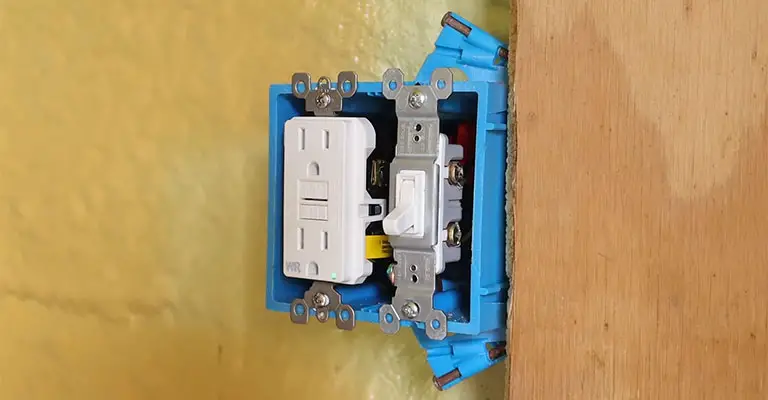
The first thing you have to do is install a GFCI. Here’s what happens:
Circuits should be de-energized. Switch the power off with the main breaker It is necessary to remove the faceplate. You should remove the screws from the outlet if there are any.
Disconnect the wires from the old outlet and remove it from the box. You can identify the load and line terminals of the GFCI by taking it out of the box
Follow the instructions on the GFCI box when connecting the wires. To join the white wire to the light screw, you will need to run the black wire to the dark screw. It’s still your line side that you’re working on.
The load side does not require any connection. Grounding terminals are connected to the bare wire. Reattach the faceplate to the electrical box after installing the GFCI.
Last but not least, test the GFCI by pressing ‘TEST.’ You should see ‘RESET’ appear. A working GFCI should do that. The power can be switched back on.
In order to connect the GFCI to the light fixture, follow these steps:
- The line side is where power enters, and the load side is where it leaves. As a result of this information, the wiring process can be affected.
- Make sure the wiring from the GFCI to the switch is extended. Splice the neutrals together and then connect the black wire.
- Extending the wiring from the switch to the light fixture is possible even further.
Precautions To Take While Wiring GFCI Switch Outlet
- The GFCI may trip whenever you switch on the light, so you should consult a professional electrician.
- Keep the GFCI tested regularly. A few GFCIs are capable of performing automatic tests. Take a look at the instructions.
- It is important not to confuse the line and load sides. The wires should be connected to the correct terminals. If you do not follow these instructions, you may prevent the GFCI from providing the protection it is meant to provide.
- You should match the wire size to the load you intend to connect. A small cable may not be overwhelmed by one light fixture. You may start a fire if you need to connect multiple lights to the same cable.
- Verify that the power is off by testing the switches
- Switches, outlets, and lights shouldn’t be tampered with without de-energizing the circuit.
GFCIs Trip In Response To Ground Faults
When a ground fault occurs, GFCIs trip. It is possible for nuisance tripping to occur with GFCIs. For example, the presence of a motor in an appliance can trigger a GFCI even when there is no ground fault to cause the trip.
Although not all GFCIs have motors, you should know that a light switch can also trip a GFCI. You shouldn’t worry about your motors if you do not have motors on your GFCIs. The neutral and ground become connected when you tie them together.
If the switch sends a certain amount of voltage out but does not return those voltages, this will be detected by the GFCI.
There is a danger associated with this phenomenon. You might be lucky enough to trip the GFCI. You may start a fire if this doesn’t happen.
It’s the worst-case scenario, but it’s still possible. You may become inconvenienced if a light switch on a GFCI outlet does not kill you. Take a moment to consider this. In the event of a ground fault, what happens?
The GFCI turns the power off. You will be plunged into darkness if your GFCI is connected to your lights. That’s why people hesitate to install lights on GFCIs. Starting a fire is not something they are afraid of. The contractors trust wiring their homes.
Since the GFCI keeps tripping unnecessarily, these homeowners are worried that their lights will keep turning off. Due to this, caution should be exercised.
Final Words
GFCI technology isn’t expected to be added to lights by consumers, according to NEC. However, when installing GFCIs in areas such as the bathroom that require GFCIs, you should install them on outlets that serve light fixtures.






